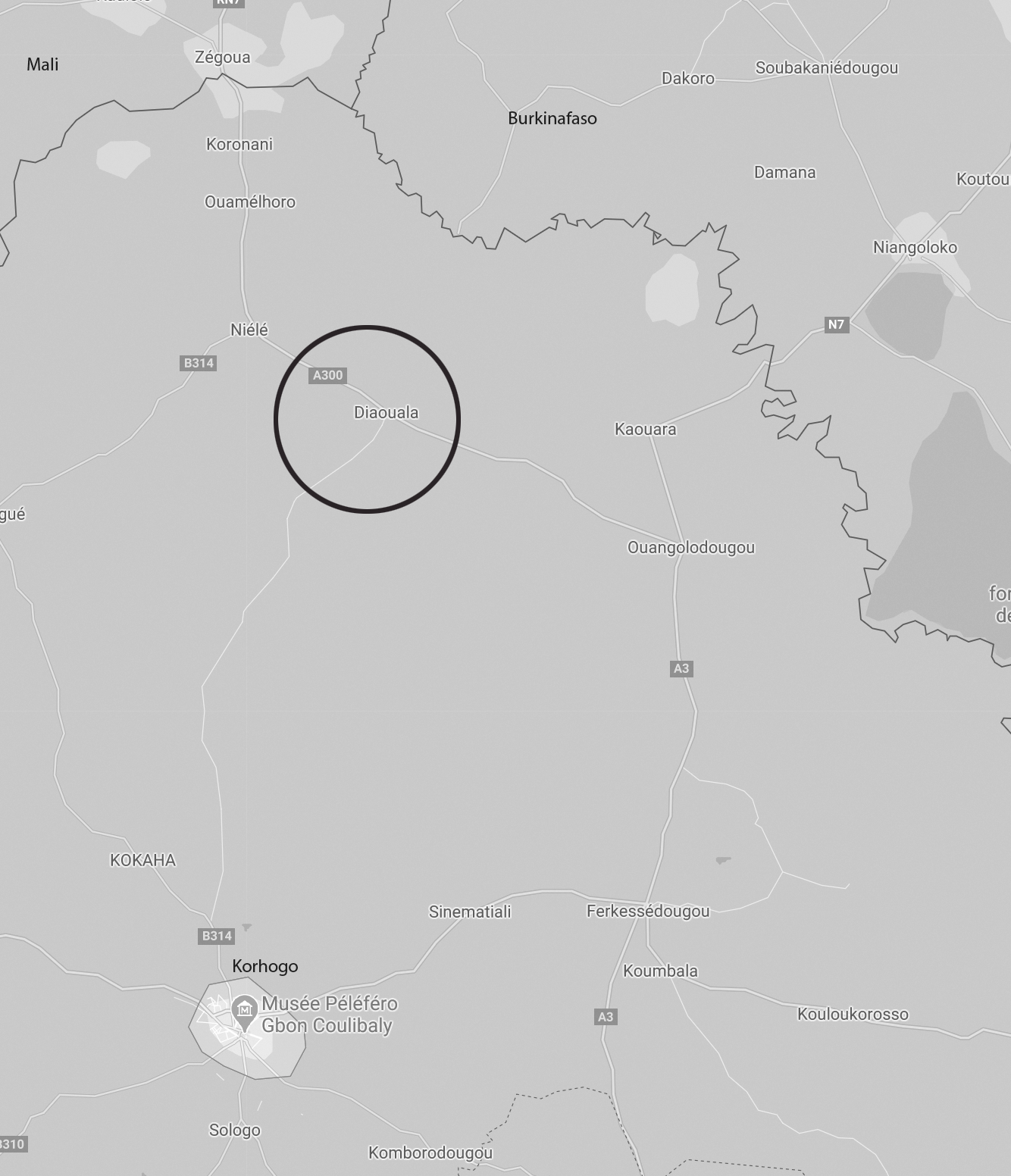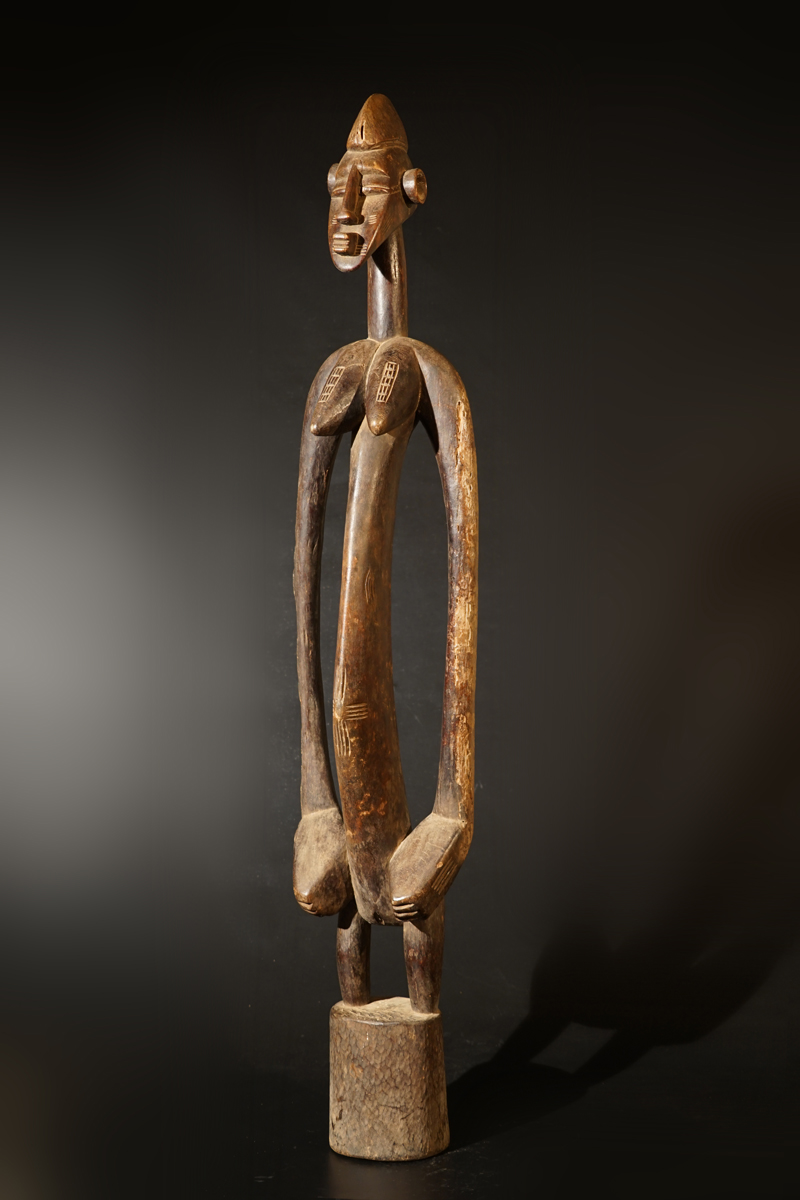 |
 A female Rhythm Pounder, Déblé, from the Diaouala region, a style, which is also well known in the region of M´Bengue, that Northern Ivory Coast with short legs standing on a high base as if rooted there, the overlonged body gently curved, long arms forming a slender O, the impressively large hands resting on the hips as a counterbalance to the firm large breasts, radiating scarifications around the navel, further linear, jagged and square ones on the back, breasts and face, the elongated head sits on an equally very long and elegantly curved neck, the large ears are circles and appear attached, as do the pointed lips, the narrow nose with its wide end and the slit-like eyes, everything is highly abstract and stylized, even the hairstyle is a crest reminiscent of an upturned boat, the statue breathes a quiet elegance and strength; on the coiffure some insect bite and many more on the arms, as well as clear signs of age and intense cultic use, in particular on neck and arms a touch patina, vivid light-brown surface..
Lit.: Anita J. Glaze, Art and Death in a Senufo Village, Indiana University Press, Bloomington 1981. William Rubin, Primitivism in 20th Century Art, Affinity of the Tribal and the Modern, New York, 1984. Homberger, Lorenz, Die Kunst der Senufo aus Schweizer Sammlungen. Texte von Till Förster, 1988. Hans-Joachim Koloss, Till Förster, Die Kunst der Senufo, Elfenbeinküste, 1979. Museum für Völkerkunde, Berlin, Burkhard Gottschalk Senoufo. Massa et les Statues du Poro, Düsseldorf, Verlag U. Gottschalk, 2002. Susan Elizabeth Gagliardi, Senufo unbound. Dynamics of art and identity in West Africa, Cleveland 2015. Till Förster, Smoothing the Way of the Dead, A Senufo Rhythm Pounder, Yale University Art Gallery Bulletin (2005): 54ff., ill.
price on request
Height: 128 cm
Weight: 8,1 kg

|
 photo: tribalartforum.com/ identification no. FSB03832.jpg
photo: tribalartforum.com/ identification no. FSB03832.jpg |
|